How Barry’s Bootcamp Revolutionized the Sweating‐As‐Friendship Approach to Working Out
Jason Kelly, the New York bureau chief at Bloomberg and serial marathoner, dives into the (lucrative) world of wellness in his new book, Sweat Equity. This week, he shares with Well+Good an excerpt that explores the rise—and enduring influence—of Barry's Bootcamp.
Barry Jay remembers the day that changed his life, because for years he carried the membership card in his wallet. The date was August 4, 1988. The card is from a Los Angeles gym called Sports Connection.
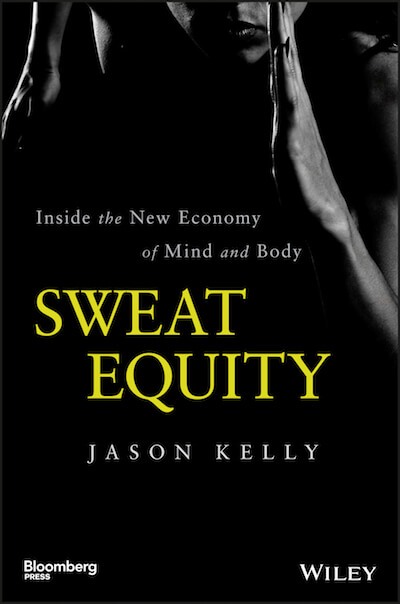
Five years of hard living in L.A. had taken its toll. Then‐25‐year‐old Barry started going to the gym, and soon he started working at their front desk. Next he was an instructor. Then he was a sought‐after instructor.
Now, he’s the man behind an eponymous chain of boutique fitness outlets, with locations on the American coasts, London, and Oslo. His company is worth upwards of $100 million, about 20 years after its creation, and won a coveted private equity investment in 2015.
The décor at Barry’s Bootcamp in the Tribeca neighborhood in New York is downtown workout‐hip. In a nod to the loft spaces in that part of Manhattan, the ceilings are high, the floors concrete. The walls are painted in gray shades of camouflage, featuring the Barry’s Bootcamp logo, complete with the sergeant’s chevron.

{{post.sponsorText}}
“I think I’m going to die,” a twenty-something woman groans to her boyfriend as they walk out. Barry appears a minute later, having taught the class that brought her to that point. She’s gone, but I relay the comment. He brightens. “I love it when people say that,” he says. “The worst would be if someone say, ‘That was it?’”
We walk over to the Fuel Bar, past the refrigerator with $3 bottles of water (with Barry’s Bootcamp labels). Offered a protein shake, I follow his lead. He orders a vegan version of the PB Special, a concoction blending peanut butter, bananas, unsweetened almond milk, some protein powder, and, in my nonvegan case, some whey. His version uses rice instead.
“I think I’m going to die,” a twenty-something woman groans to her boyfriend as they walk out.
Barry dropped 15 pounds by going back to veganism. He’d been vegetarian for seven years, vegan for three, and then experimented with paleo for a while. He used that diet to get to 150 pounds in honor of his fiftieth birthday, in 2013. He gained it back in the intervening year. In the summer of 2014, he was back to 150.
He picks up my shake tab, only to find that his was already paid for by a student. We stop to thank his patron, who it turns out is currently playing Jean Valjean in the Broadway revival of Les Miserables. Barry makes plans to see the actor, Ramin Karimloo, sing that night at Birdland, the noted New York City jazz club. “He’s the second Valjean we’ve had,” Barry tells me later. Hugh Jackman, who starred in the film adaptation the musical, was the first.
Broadway celebrities are Barry’s favorite kind. Karimloo became a client after Barry visited the cast backstage, at the invitation of Nikki M. James, who plays Eponine in the current cast. The week after we first talked, Barry had plans to see Wicked—for the eighth time.
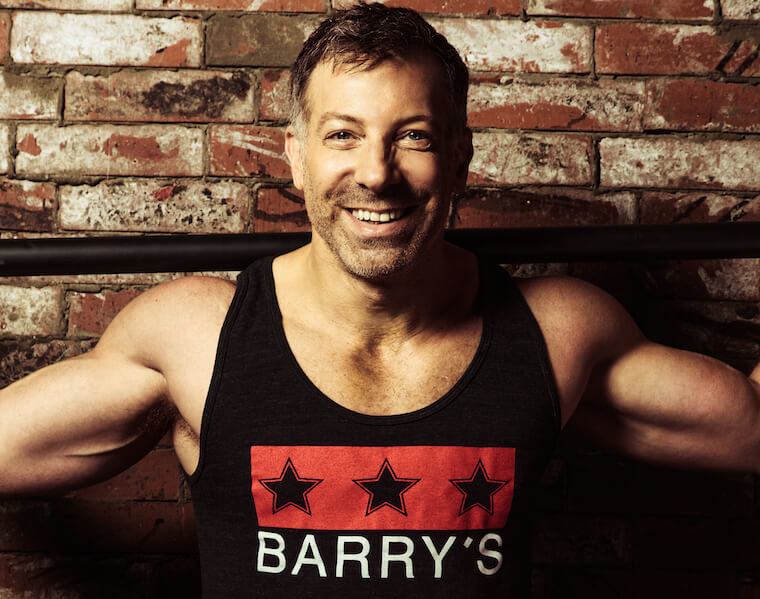
He discovered Broadway as a kid growing up in Rockland County, a clutch of New York suburbs north of Manhattan, on the west side of the Hudson River. After seeing Annie (starring Sarah Jessica Parker in the title role), he became obsessed with his parents’ Broadway albums. Soon he was taking buses to New York and buying $10 standing‐room‐only tickets, watching for a seat that stayed empty through the first act, then grabbing it after intermission.
Three months of community college back in Rockland County didn’t take and he pursued a more vocational route to acting through an acting school in New York City. Upon graduating, he landed a role in the chorus in a Broadway show; he quit when the show went on tour, to Alaska. Los Angeles sounded better.
He ditched acting in favor of writing songs, scraping by for a few years. Barry’s devotion to Broadway is matched only, if incongruously, by his passion for horror movies. That led him to interview for a tour guide job at Universal, by his wits the top studio in the horror genre. He didn’t get the job. The next five years were a mid‐1980s Los Angeles blur of late nights, booze, bad food, and more. Which brought him to that fateful day in 1988.
The bootcamp name came from the mouth of a weary client after a class he was teaching at a local box gym who said, “This isn’t body sculpting, it’s a bootcamp!”
“I thought to myself, ‘I don’t want to die,’” he says.
The intervening decade found Barry moving up the gym instructor ladder. He gathered a following as he honed his teaching style, an approach that borrows heavily from his theatrical history. In person, he’s lively and intensely engaged, a personality that shows through in his classes.
He’s also, in his own friendly way, sort of mean. The bootcamp name came from the mouth of a weary client after a class he was teaching at a local box gym who said, “This isn’t body sculpting, it’s a bootcamp!” (In Barry’s telling, the story includes an expletive adjective.) When Barry told that story to his eventual business partner Rachel Mumford, she jumped on the name, and added “Barry” to it.
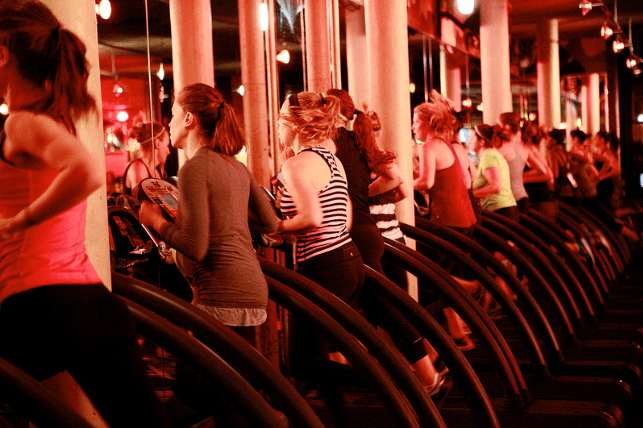
The opportunity to start what became Barry’s Bootcamp came in 1998, when the boutique gym where he worked—and where Rachel and her husband John were members, as well as his personal training clients—abruptly shut down. At his last class, Barry gathered up his students’ phone numbers, the foundation of his first, unofficial client database of sorts. Then, and for years, it was decidedly low‐tech. “Twitter didn’t exist,” he says. “There was no Facebook. Our first check‐in system was index cards.”
The business model they settled on was different from the typical gym. Monthly fees provided little actual incentive for customers to show up, especially for the gyms themselves. “I pay every month and go once a week,” he says. “It’s a dream for the gym.”
Barry’s idea was different. He created “The Academy,” where members would sign up at the beginning of the month, pay $200, and register for a series of classes. If they were going to miss class, they had to call. Not notifying risked a call, usually from Barry, asking where the student was. In one case, he sent two students—running—to the absent student’s house to fetch her.
Once they settled on bootcamp, they embraced it. Early customers were issued dog tags. If you threw up during class, you got a T‐shirt.
Once they settled on bootcamp, they embraced it. Early customers were issued dog tags. If you threw up during class, you got a T‐shirt. Barry went grocery shopping with some students and asked them to clean out their refrigerators of food they weren’t going to eat any more and bring it to class, where he’d donate it.
One day, a student sold out a couple of fellow bootcampers, who he’d spotted at Sprinkles cupcake store. When they arrived at class, Barry had them run to Sprinkles, take a picture of themselves there, run back and show it to him. “I heard you liked to go there, so I figured I’d help you out,” he told them. “They also burned off the cupcakes they’d eaten over the weekend,” he tells me.
Such antics, plus the workout, helped him develop a cult following at the first studio. The original Barry’s Bootcamp sits at a busy corner in West Hollywood, wedged in the center of a V‐shaped two‐story strip mall. There’s a parking lot underneath, a 7‐Eleven next door, and a gas station across the street. The eclectic West Hollywood neighborhood—a cocktail of hip and sleazy shops, dive bars, and hard‐to‐get‐into restaurants—unfurls down the hill.
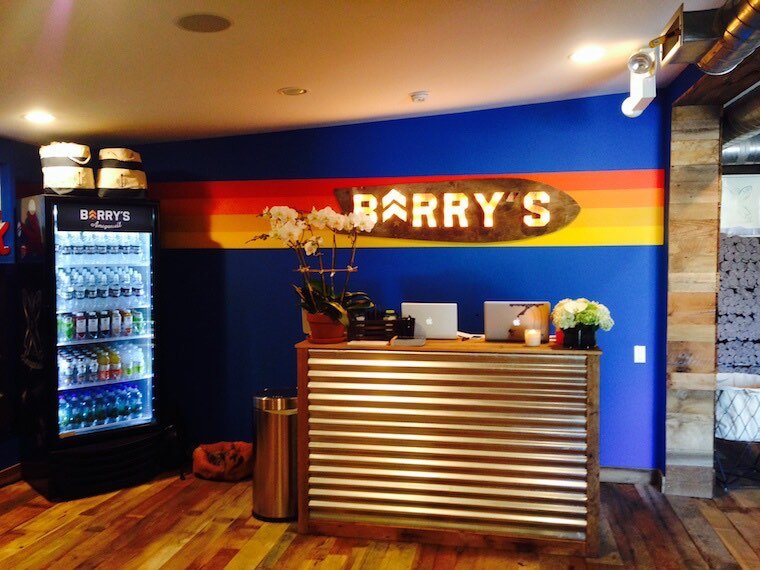
On a sunny October afternoon (is there any other kind of afternoon in L.A.?), the music is thumping and half a dozen bootcampers are in class, behind glass in a darkened room. Outside the studio, there’s barely enough room for the check‐in desk and a rack of apparel.
Barry’s sits in a complex that now offers varying flavors of fitness and wellness. There’s a Brazilian jiujitsu studio on one side, a gym geared toward kid’s fitness on the other. Upstairs, you can get a massage. A new juice bar announces its grand opening. It’s just the sort of normal‐but‐Hollywood milieu that gives rise to those “Stars: They’re Just Like Us!” photos in the weekly entertainment magazines we all pretend not to read.
One time, one of the Spice Girls refused to keep going. Barry made her—and her furious partner—run up and down the nearby, congested La Cienega Avenue.
This is where Barry’s was born, and his legend grew. One of the desk attendants verifies the running‐to‐the‐cupcake‐store story. She adds that one time, in a partner workout, one of the Spice Girls refused to keep going. Barry made her—and her furious partner—run up and down the nearby, congested La Cienega Avenue. Just outside the door, there are the stairs Barry used on early students who showed up late for class. “I wanted to create a new format where being on time was imperative, that every minute of the work-out matters—where we were reminded self‐discipline IS self‐love,” he writes me in an email after our initial conversation.
The location, and word of mouth, also began to draw the occasional celebrity. On its website, Barry’s has references to and from notables including Kim Kardashian and Katie Couric, people familiar to almost everyone, but not always to Barry himself. Beyond Broadway and horror, he has the pop culture literacy of a recently arrived alien. When introduced to Jessica Biel, he knew her from the Texas Chainsaw Massacre reboot, not from her numerous TV or movie appearances (or her husband Justin Timberlake, also an early Barry’s client).
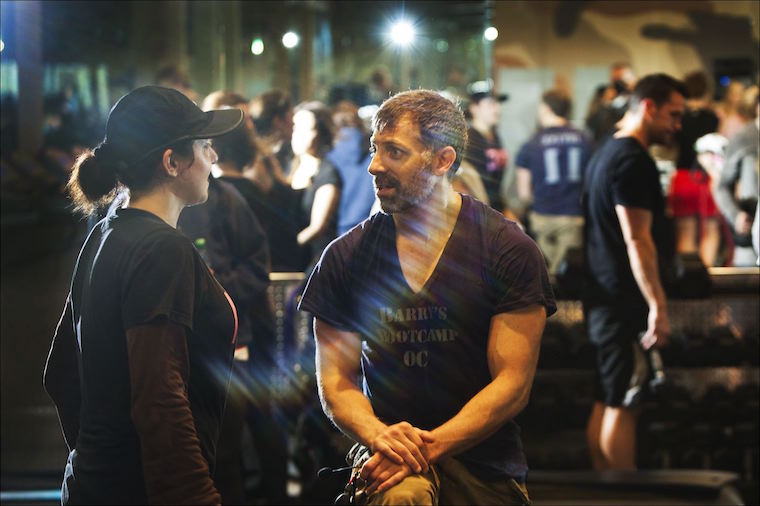
What keeps them coming back, Barry says, is the workout and its wicked (some would say brutal) efficiency. Each workout comprises a single hour, and involves a combination of heavy weights and cardio, the latter using a treadmill. Each instructor—one of Barry’s executives refers to them as entertainers—has his or her own method, every class. Some split the class into 30‐minute segments; others go for four 15‐minute intervals of weights and cardio.
Barry and the others don’t tell students ahead of time exactly what the workout will be that day (other than saying it’s an “arm day,” for instance), until they’re actually in the room. The element of surprise is part of the appeal, another way to break the drudgery many associate with the soulless routine—and isolation—of the treadmill or elliptical machine at the local gym. “There’s a whole sense of ‘I’m bored doing this alone,’” he says. “People like the camaraderie and the personal attention. It’s like we’ve livened up the party.”
“People like the camaraderie and the personal attention. It’s like we’ve livened up the party.”
That piece, the sweating‐as‐friendship‐foundation, is critical, Barry says, echoing many in the boutique fitness space. “You know that you can come with your friends, or that you’re going to at least get to know the people in the class,” Barry says. “Then the trainer starts knowing your name and what’s going on in your life. We give out our cell phone numbers.”
This all‐in‐this‐together approach is driving the broader boutique fitness movement, where the successful outlets give their clients a sense of community. Even if one is too busy trying not to barf during the actual class, the ability to commiserate after is deeply appealing. There’s a basic human comfort to seeing the same people at the same place.
It’s a phenomenon that cuts across a number of modern fitness phenomena, including clubs devoted to running, cycling, or swimming (or all three). We do, as the Cheers song says, want to go where everybody (or at least some-body) knows our name. Or, to name check a more recent production, the Disney tween hit High School Musical, we’re all in this together.
This is the final installment in Well+Good’s four-part Sweat Equity excerpt series—catch up on the first, second, and third parts now!
Loading More Posts...